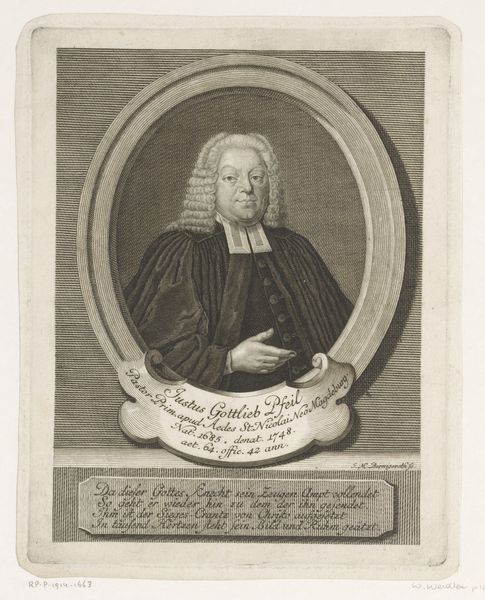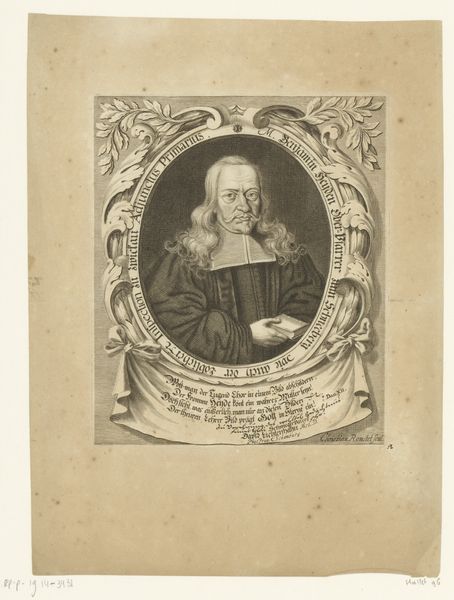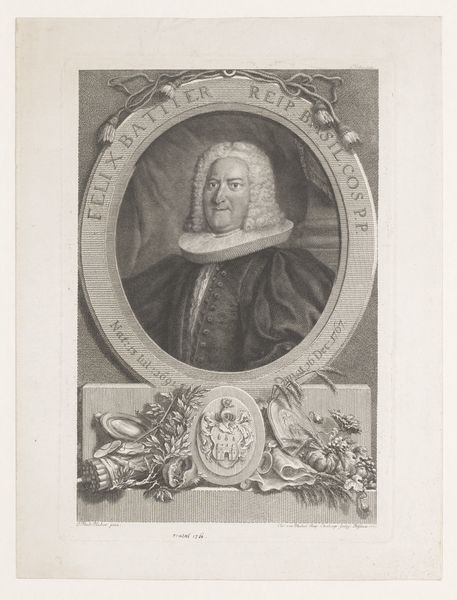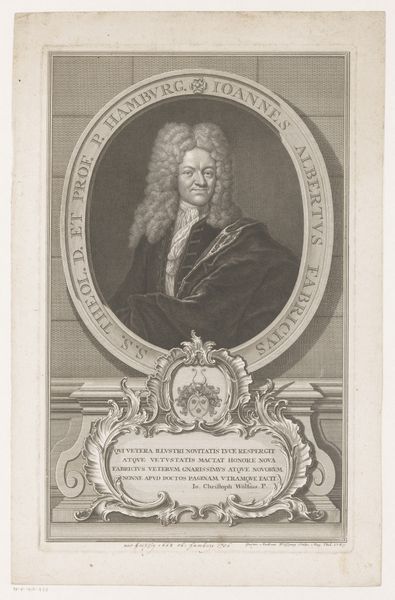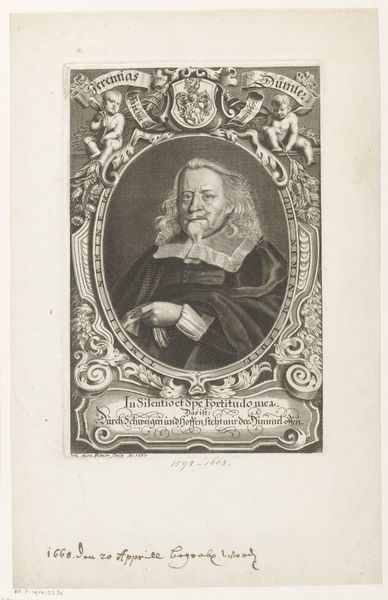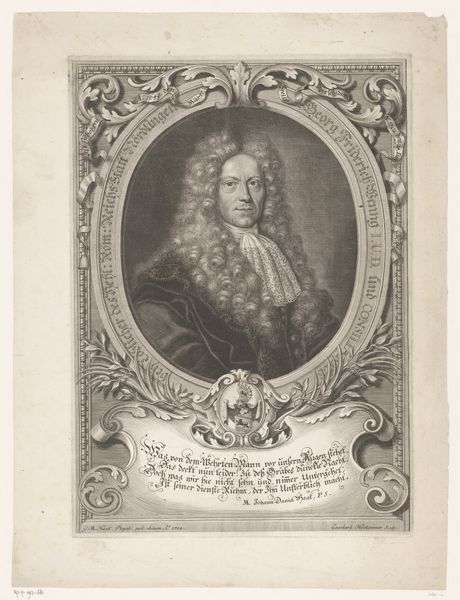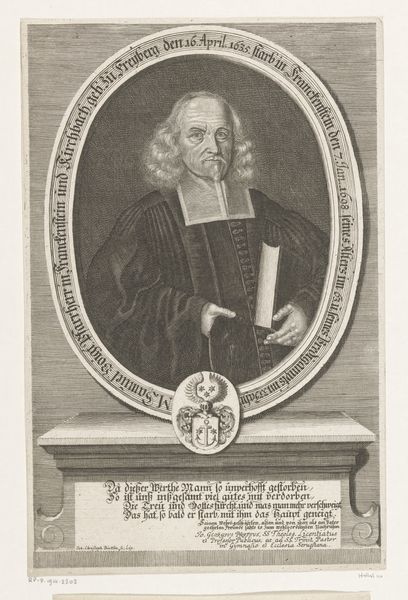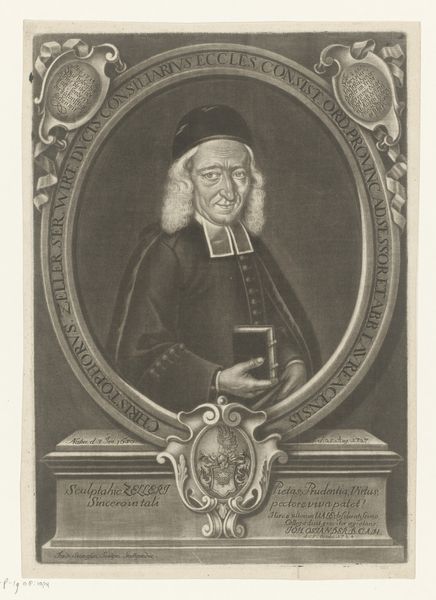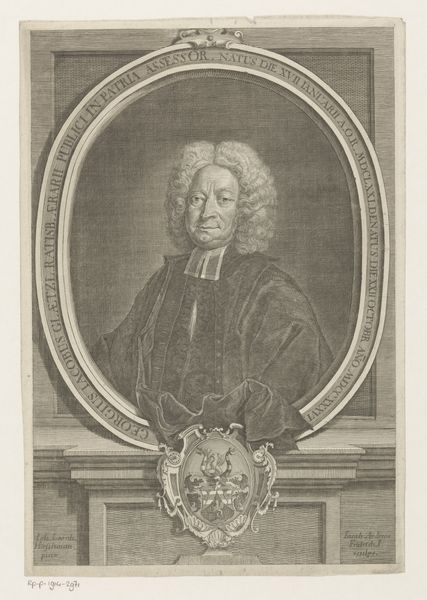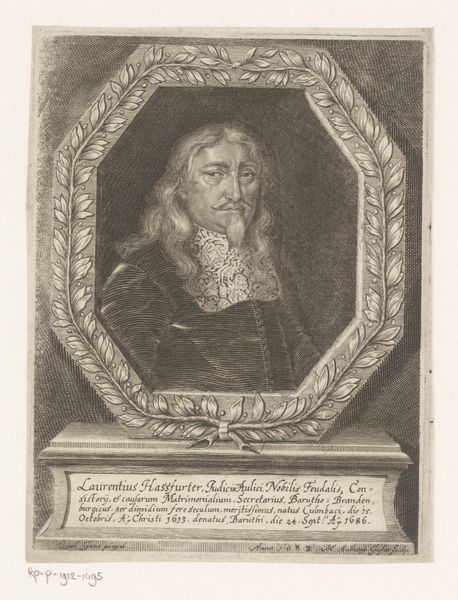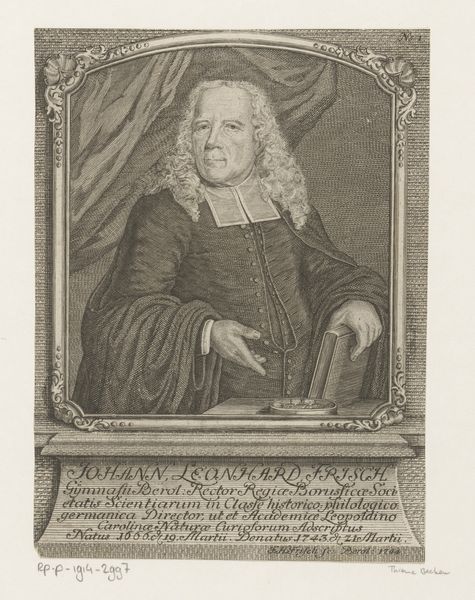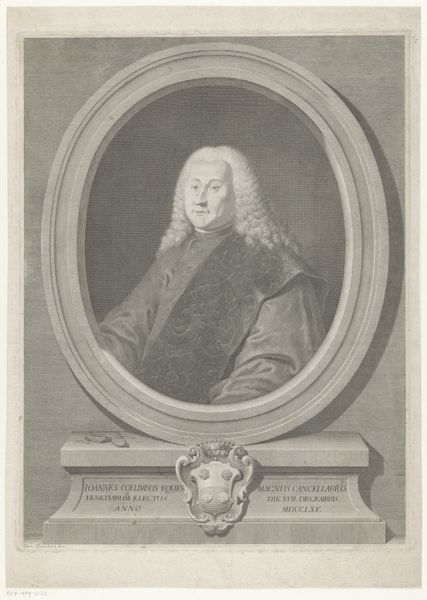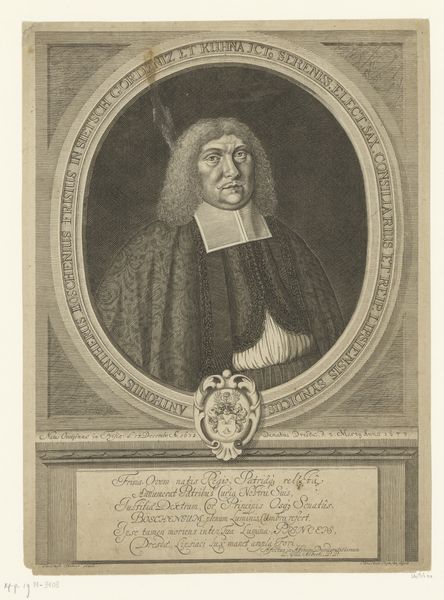
Dimensions: height 298 mm, width 172 mm
Copyright: Rijks Museum: Open Domain
This is a portrait of Gottfried Berringer, made by Christian Romstet, likely sometime around the late 17th or early 18th century. It's an engraving, a medium that allowed for the relatively easy reproduction and distribution of images. Looking at this image we need to consider the status of portraiture in the period it was made. Who got their portrait made, and why? Berringer, as we can see from the Latin inscription, was clearly a man of status, holding positions in law and the church within the Electorate of Saxony. The elaborate frame, the coat of arms, and the very act of commissioning a portrait, all speak to his social standing. Engravings like this served to reinforce social hierarchies, circulating images of the powerful and reinforcing their position within the societal structure. To understand this image fully, we'd need to delve into the history of Saxony, the role of the church, and the structures of power in the period. Art history, at its best, connects the image to the dense web of social and institutional forces that shaped its creation and reception.
Comments
No comments
Be the first to comment and join the conversation on the ultimate creative platform.

